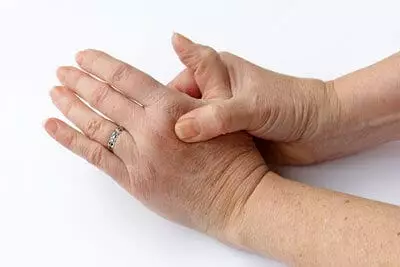Almost 10 million people in the UK suffer from arthritis, making it one of the most prolific chronic medical conditions in the country. There are, of course, many ways to treat the condition using conventional medicine, but alongside these more common methods are some that are quite unexpected.

Natural pain remedies for arthritis treatment have existed for hundreds, if not thousands, of years. They range from simple herbs and spices, to the active ingredients contained within plants. Here are four of the best that you can try for yourself at home. However, it’s also important that you consult your GP if you are experiencing arthritis pain for the first time.
1. Turmeric
Turmeric has long been a popular home remedy for osteoarthritis and rheumatoid arthritis. A miracle spice, turmeric is forever being lorded for its amazing anti-inflammatory properties. The active ingredient in the spice is curcumin. This is the chemical responsible for reducing joint pain and swelling.

It works by blocking the cytokines enzymes that cause inflammation. Turmeric can be ingested in food as a dry spice, in its raw, root form or as a supplement.
Get a FREE Brochure
Simply complete our form to see a full range of bathing solutions & their key features. It takes no time at all!
The best thing about turmeric as a pain remedy for arthritis? It really works. A clinical trial in 2012 using a turmeric supplement actually showed an improvement in flexibility and a reduction in pain for patients suffering with osteoarthritis. Another study even showed that curcumin was able to reduce pain and swelling in rheumatoid arthritis patients even more effectively than diclofenac sodium, a relative of ibuprofen.
2. Ginger
Another natural remedy that, like turmeric, might turn up in a takeaway curry, is ginger. The root is well known to settle an upset stomach, but the universal appeal of this common food stuff could have very beneficial effects for arthritis sufferers too.
Just like turmeric and the chemical equivalent ibuprofen, ginger has been shown to have anti-inflammatory properties and to stimulate pain inhibitors.

There are a number of academic papers that document the best use of ginger as a method of controlling the pain experienced by arthritis sufferers. Taking a ginger supplement three times a day on a long term basis has been proven to help with pain caused by osteoarthritis.
Another academic investigation found that taking ginger twice a day worked as well as ibuprofen taken three times a day.
One study with a ginger extract was even seen to reduce inflammation as successfully as steroids.
3. Chilli
It’s not the chillies themselves but what’s in them that can help reduce the pain of arthritis. Capsaicin is present in chilli peppers, in fact the hotter the chilli the more capsaicin there is. It works as a pain reliever by reducing Substance P – a pain transmitter located in nerves that submits pain signals to the brain. Substance P is also responsible for activating inflammation in joints.
It is a celebrated remedy in the medical world because it has astounding effects with no serious health risks. Capsaicin has the ability to lower pain and sensitivity in joints.

Although it’s quite difficult to produce capsaicin yourself, it isn’t impossible. But remember, it is for topical use only!
Capsaicin cream, gel and plasters are readily available and can even be prescribed, but if you want to create your own, you’ll need a huge number of chilli peppers. It’s best to use dry chillies or chilli powder that can be mixed with beeswax and other natural ingredients to create a topical solution.
Don’t forget though that chillies can be very hot and that burning sensation you feel in your mouth when you eat one can be replicated on your skin. Too much capsaicin can actually cause blistering of the skin, so be careful if you are thinking about this as a pain relief remedy for arthritis.
4. Apple Cider Vinegar
You can’t miss the benefits of apple cider vinegar. It is forever being linked as a treatment for a number of different ailments, but did you know it’s an effective pain remedy for arthritis?
It works on many levels. Firstly, apple cider vinegar contains certain minerals (calcium, magnesium, potassium, phosphorus) that your body needs to dull pain. If you are an arthritis sufferer and deficient in any of these, apple cider could replace them efficiently. Magnesium also makes bones stronger.

The antioxidants in apple cider vinegar, beta-carotene and acetic acid, help stop free radicals of damaging cells and tissue. This is something that an arthritis sufferer will experience over time.
Some arthritic pain is caused by waste in connective tissues. A number of elements in apple cider vinegar, pectin, acetic acid, absorb these toxins and rid them from the body. It also dissolves the acid crystals in joints, another cause of pain and discomfort.
Apple cider vinegar can be taken both orally and applied to the skin. As a drink it should be taken three times a day with a little water and honey.
The same mixture can also be applied to the skin surrounding affected joints. Apple cider vinegar can be used as a soak in warm water. It might not smell fantastic, but an apple cider vinegar bath can do wonders for arthritic pain.
While these are all pain relief remedies for arthritis, there are ways that you can improve your bathroom to help you to cope with arthritis, and that is where Bathing Solutions comes in. If you would like to improve your bathroom to help you cope with arthritis, discover our collection of specially designed easy-access baths, walk-in showers, and wet rooms that we offer here at Bathing Solutions.






